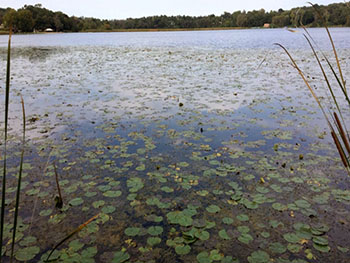Lake County, Illinois Stormwater Commission Develops a Tool to Support Wetland Restoration Planning

Wetlands can store floodwater, protect and enhance water quality, provide fish and wildlife habitat, and provide recreational opportunities and aesthetic benefits for communities. Climate Change impacts such as sea-level rise, drought, and wildfires can all contribute to displacing wetlands. Other stressors, such as land development, may further exacerbate the loss of wetlands. Through the development of the Wetland Restoration and Preservation Plan (PDF)(2 pp, 81 K, About PDF), the Lake County Stormwater Management Commission (Commission) learned the county had lost 55% of its historic wetlands and their associated environmental functions.
To counter potential future wetlands loss, Lake County implemented a no-net-loss wetland acreage policy with a net gain in wetland function goal (PDF) (145 pp, 14 MB, About PDF) to improve their water quality and flood storage capacity. Using information from the Lake County Wetland Inventory and a new wetland classification system, the Commission created a Wetland Restoration and Preservation Plan and corresponding decision support tool. The tool, created in ArcGIS, took existing wetland datasets from across the county, added hydrogeomorphic codes and National Wetland Inventory codes, and applied a modified protocol for a desktop functional analysis to Lake County’s existing and historic wetlands to evaluate the functions of local wetlands. The tool is being used by the Commission and other local partners to demonstrate the benefits of wetlands and help prioritize wetlands they may wish to preserve or restore.
|
How Did They Do It? |
Applicable EPA Tools |
|---|---|
|
Step #1: Convened relevant partners and raised necessary funds
|
EPA's Funding Wetland Projects (pdf) factsheet provides information on gathering funding for wetland protection, restoration, or management |
|
Step #2: Conducted analysis and tool to assess wetland characteristics
|
The EPA’s Climate Ready Estuaries (CRE) workbook provides guidance for conducting risk-based climate change vulnerability assessments and developing adaptation action plans. The EPA's Scenario-Based Projected Changes Map provides easy to access scenarios of projected changes from EPA’s Climate Resilience Evaluation and Awareness Tool for annual total precipitation, annual average temperature, precipitation intensity for the 100-year storm, number of days per year with temperatures above 100 F, and sea-level rise for coastal locations. |

